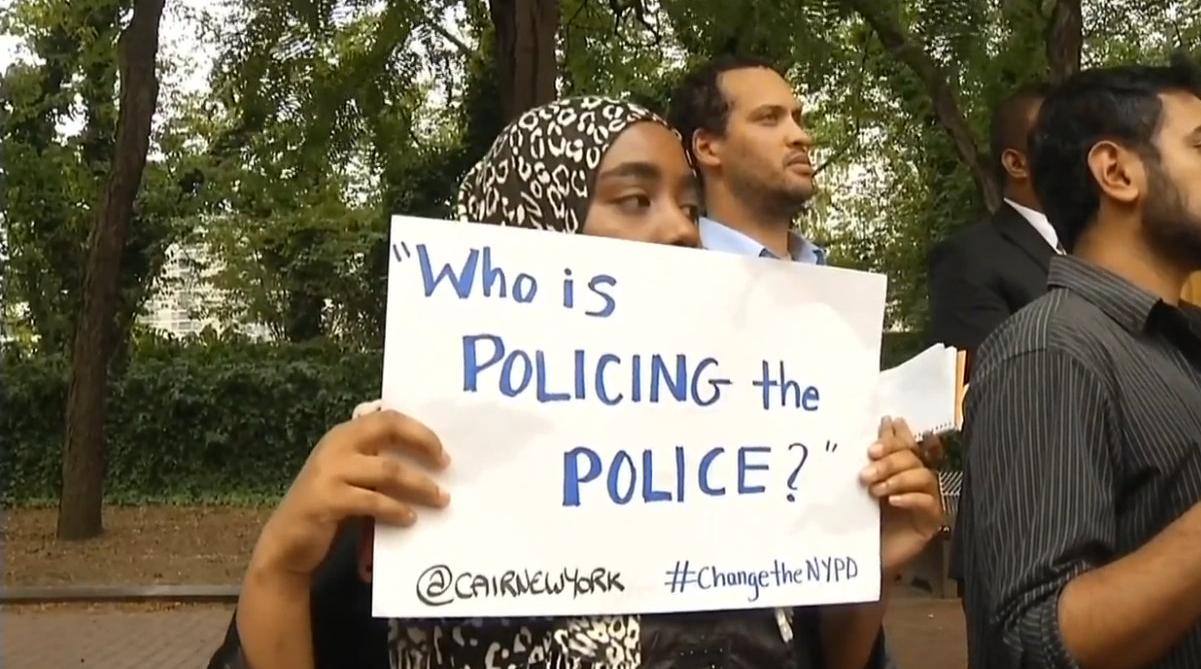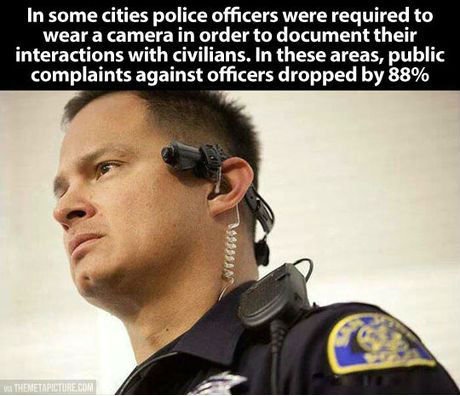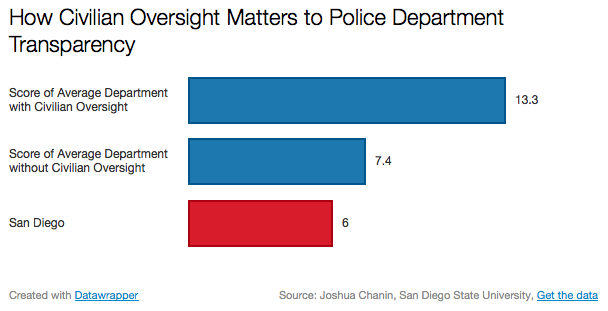Since the recent tragic events in Ferguson, MO unfolded, there has been an unrelenting supply of Monday morning quarterbacking from political pundits and social activist alike. Throughout the onslaught of commentary, one overarching theme has been constant, the scaling back of over-militarized local police forces along with calls for greater law enforcement oversight. Although the militarization of local police does pose a threat to law enforcement and community relations, here we focus on the latter. Preventing another Ferguson begins with greater law enforcement oversight.

Civilian Police Complaint Review Panels.
Greater law enforcement oversight can manifest in several different ways. For instance, civilian oversight panels with subpoena power to review law enforcement use of force. For example, the city of Houston, by way of executive order by Mayor Annise Parker, implemented a new Independent Police Oversight Board (IPOB) consisting of 29 appointed members reflecting the demographic of the city with unfettered access to all records and police department data. Likewise, the implementation of a Police Ombudsman, defined as “an official appointed to investigate individuals’ complaints against maladministration, especially that of public authorities,” would be ideal in smaller municipalities. Citizen review panels are not only beneficial to the communities to which they serve, but also to law enforcement entities by demonstrating its willingness to address concerns of misconduct at large.
Traditionally, a police department’s internal affairs division is tasked with investigating police misconduct and overreach. However, nationwide, citizen filed complaints alleging everything from civil rights violations to police brutality are substantiated only 8% of the time by internal affairs departments. Specifically, in New Jersey for instance, the Courier News and Home News Tribune revealed that “[j]ust 1 percent of all excessive force complaints were sustained by internal affairs units in Central Jersey, the review found. That’s less than the national average of 8 percent, according to a federal Bureau of Justice Statistics report released in 2007.” Consequently, community faith in the police policing themselves has waned to an all-time low.
Civilian oversight does not have to be limited to complaint review. It can also include recommendations of proactive policy and procedures designed to eliminate distrust in local law enforcement while encouraging mediation wherever tempers would ordinarily be flared. Law enforcement can also expand public awareness concerning proper police protocol and rules of engagement. Civilian oversight should not be deemed as an end-all measure in repairing community relations; however it should be another tool among many in increasing law enforcement oversight, all of which can help achieve the goal of community orientated policing. In addition to civilian oversight, additional measures of supervision and personal accountability can be implemented as well.
Increasing Law Enforcement Oversight and Safety by the Use of Electronic Body Cameras.
An increasing number of law enforcement departments are implementing the use of wearable cameras that digitally record what an officer sees during the course of their shift. The use of cameras has statistically proven to reduce the amount of citizen complaints and incidents involving use of force. Comparatively, the city of Rialto, California saw its citizen complaints decrease from 24 to just 3 in the first year of use. Moreover, police use-of-force incidents dropped an astoundingly 60% over the course of that same year. The Wall Street Journal reported – by way of the Police Executive Forum –that a quarter of the 254 U.S. Police departments surveyed have begun implementing body camera use. Here in Arizona, the Mesa PD conducted its own internal side-by-side study involving 50 officers equipped with body cameras as opposed to 50 without. The results were positively astonishing, culminating in only 8 complaints involving officers appareled with body cameras versus 23 complaints against those without. However, many municipalities remain in opposition to such measures citing cost and potential witch hunts of officer misconduct. Next, we look at the most cited factors in determining the implementation of body cameras on police officers.

- Equipment and Cost Considerations
There is a legitimate concern of the cost of data storage associated with recording an officer’s entire shift. Typically, body camera’s range anywhere from $200 to $600 with data storage costs in the range of an additional $600. However, contrastingly, there is an estimated $2 billion spent each year resolving civilian claims which seemingly pales in comparison of the upfront costs of cameras and data storage.
- Engaging Recordings
Many ask, what prevents an officer from just disengaging his recording device during undesirable civilian exchanges? Clearly it would be ideal to record an entire shift; however, concerns of privacy during breaks from duty and interactions with informants and victims must be taken into consideration. One thing is for certain however, reducing officer discretion of when and what is recorded is absolutely necessary. Nonetheless, the lack of bright line rules of digital engagement would result in creative editing of filmed events. That said, determining policy surrounding when to initiate recordings is best left to municipality council and law enforcement administration in accordance with industry standards.
- Retaining Data
Considering the length of time video data is retained is crucial to both costs and the ability to effectively investigate alleged incidents. Ideally, retention would remain analogous with existing policy for cruiser dash cams and detention facilities cameras. A recent study by the ACLU, entitled “Police Body-Mounted Cameras: With Right Policies in Place, a Win For All,” suggest that the time frame for retaining data should be limited to the length of time needed to conduct investigations. Despite whatever length of retention is deemed appropriate, public access to the data is paramount.
- Privacy
As noted, there are, of course, certain interpersonal and discrete professional interactions which should avoid being recorded. A prospective governing panel, in deciding comprehensive policy guiding camera use, should take into consideration a variety of privacy concerns balanced against the publics need access recorded data. Accordingly, members of the general public should have the right to know that their interactions with police are being recorded. Specifically, under Arizona law A.R.S §. 13-3005, one party recording is permitted so long as whomever recording is a party to the communication and present during the conversation. That said, it would still be helpful to notify the general public of recordings in attempts, at the very least, to positively alter a citizens behavior.
The aforementioned ACLU study also suggests implementing policy that (1) Limits recordings to uniformed officers and marked vehicles, with an exception for SWAT raids or similar planned uses of force involving non-uniformed officers, and (2) Officers should be required, wherever practicable, to notify people that they are being recorded. Furthermore, suggested policy requiring officers to wear easily identifiable conspicuous labels indicating police body camera in use comes highly recommended.
- Public Access to Recorded Data
In addition to internal agency use, outside entities such as citizen review panels, police ombudsman an anyone else generally entitled access to law enforcement documents and material should be made available. Further, access through such means as the Freedom of Information Act (FOIA) should also be granted to access recorded data in aiding external investigations. One thing is for certain, access to recorded body camera data should be streamlined and readily accessible to prevent cumbersome investigations. In addition, proper chain of custody procedures should be fully implemented to preserve the integrity of recorded evidence.

CONCLUSION
In conclusion, the overarching frustration with inappropriate police/civilian engagement has become glaring. Addressing these issues in a universally communal fashion is a must and can be adequately done so in favor of both; the law enforcement and in the civilian community’s favor. Law enforcement is at its highest authority when acting in accordance with the community in which it serves. Therefore, it would prove abundantly productive to implement accountability measures such as civilian review panels and the implementation of body cameras to solidify the level of trust required in exorcising that authority.



